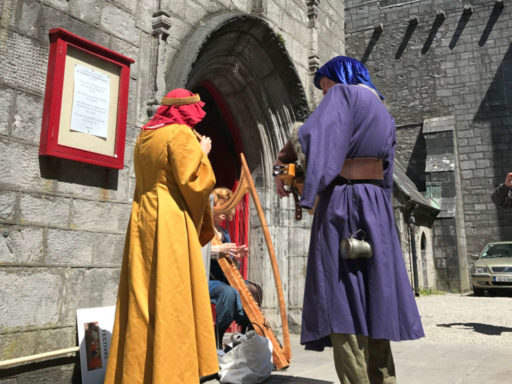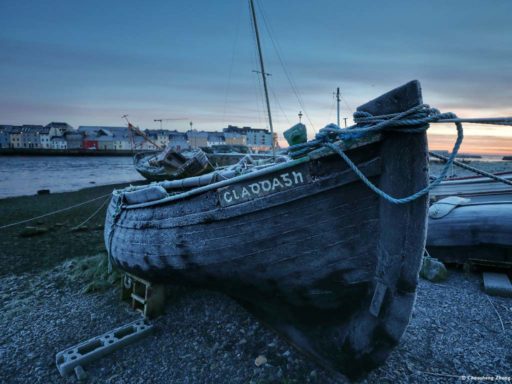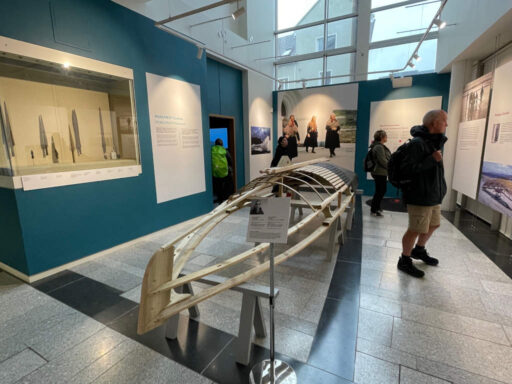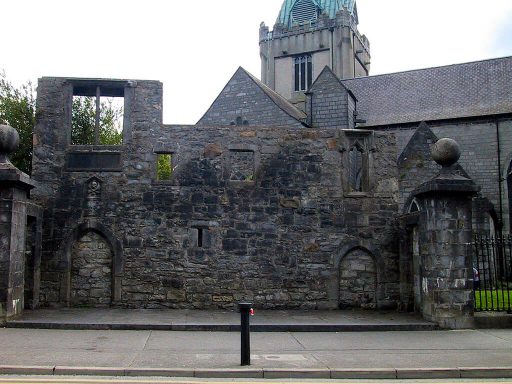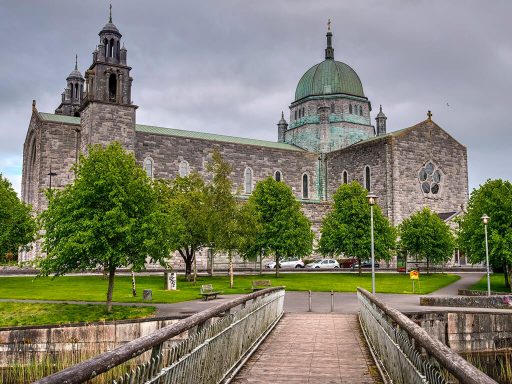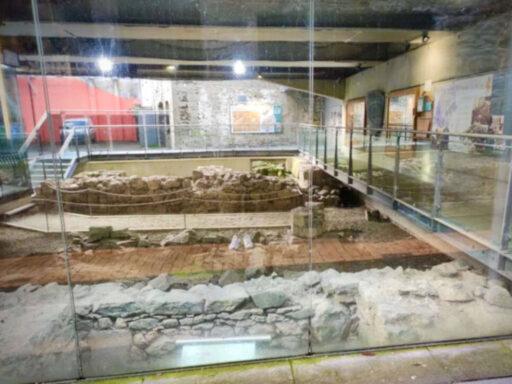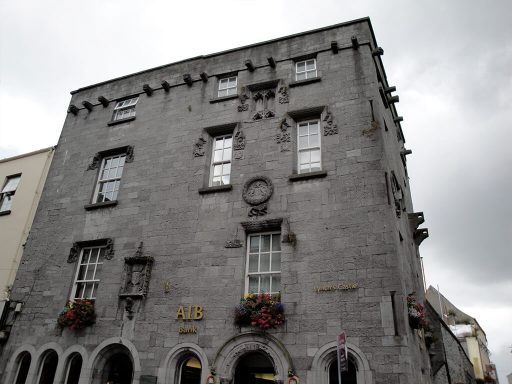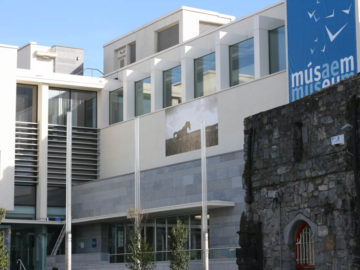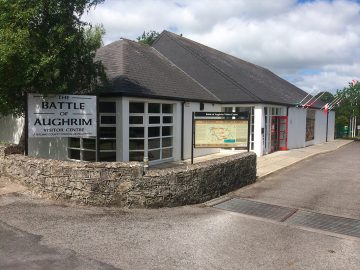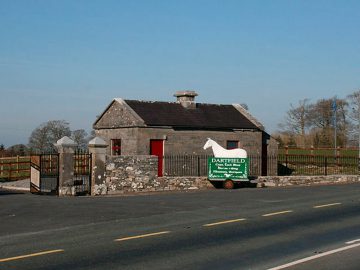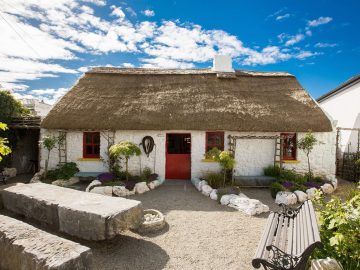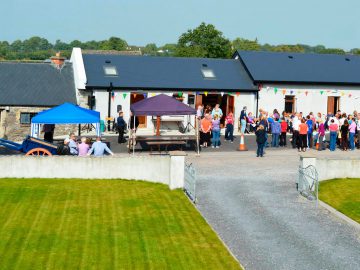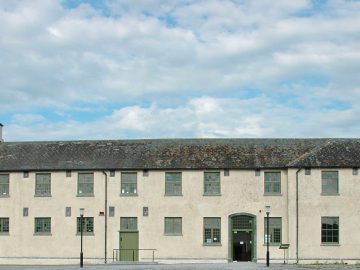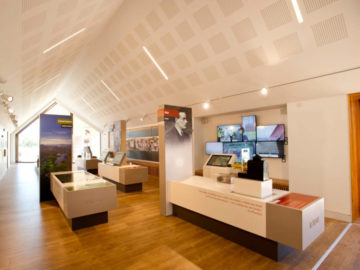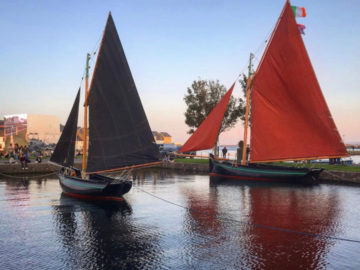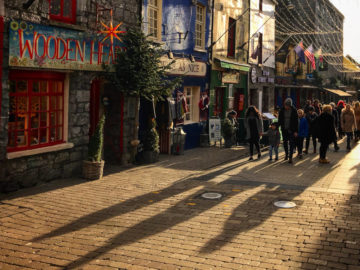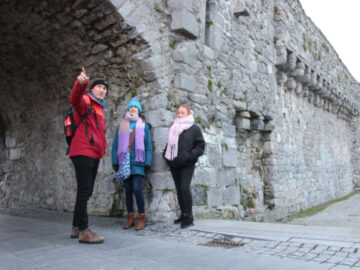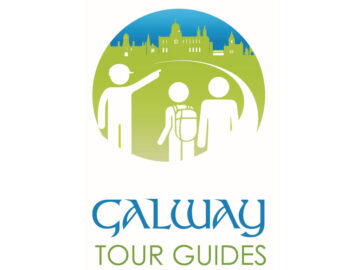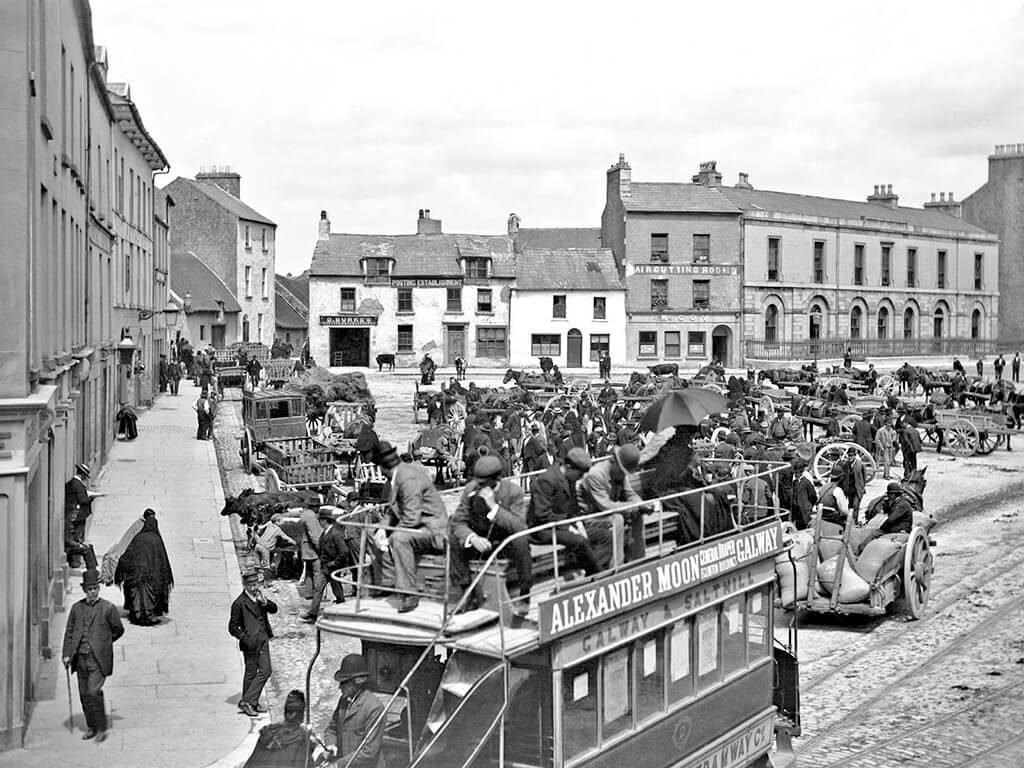
History
A bitesize history of Galway
Galway is an old city, steeped in history with an interesting past. From medieval streets to modern thoroughfares, there is much to see and do in Galway as regards times passed.
Historical gems around the city
The Browne Doorway in Eyre Square
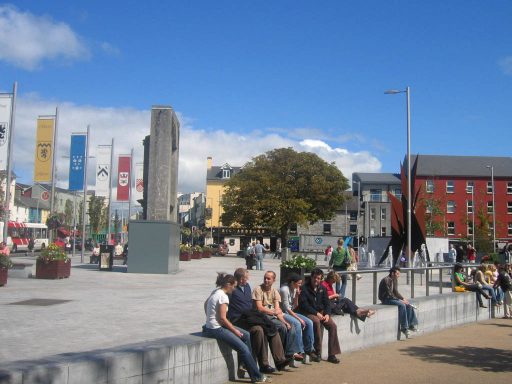
A standalone structure, this doorway, marking the original entry of the Browne house in 1627, stands as a testament to Galway’s Renaissance architecture. The intricate carvings, portraying the coats of arms of two intermarried families, enhance the beauty of Eyre Square.
The Spanish Arch
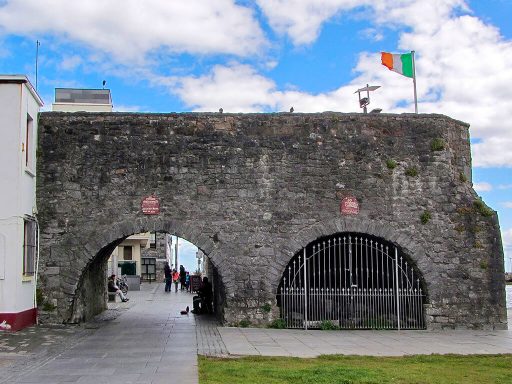
Constructed in 1584 as an extension of the 12th-century Norman wall safeguarding the quays, the Spanish Arch offers a picturesque view on the edge of the city. Often bustling with people enjoying life, it encapsulates the vibrant spirit of Galway.
Memorial Lynch Window on Market Street
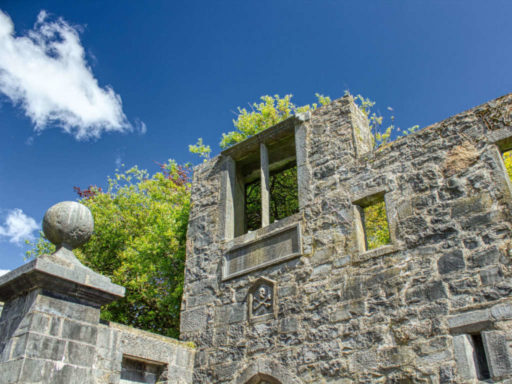
In 1493, Mayor James Lynch FitzStephen faced a harrowing choice, hanging his son for murder from their house’s window. This solemn memorial, located at 12-13 Market Street, now stands as a poignant historical site.
Galway Cathedral
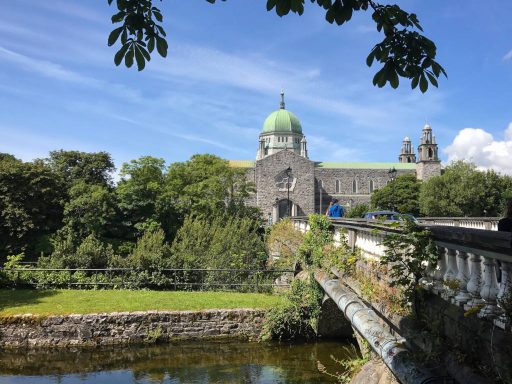
A monumental structure dedicated in 1965, the Galway Cathedral is a pinnacle of European stone architecture. Its magnificent interiors, stained-glass windows, and unparalleled acoustics make it a cherished gem, drawing tourists and contributing to Galway’s stunning skyline.
View this post on Instagram
Hall of the Red Earl on Druid Lane
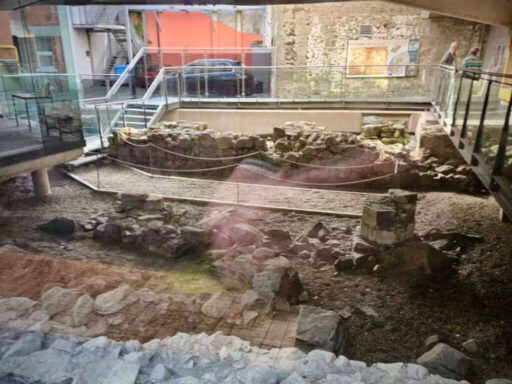
Built in the 13th century by Richard the Red Earl, this hall served as a place for seeking favors. Rediscovered in 1997, the remains are now exhibited on Druid Lane, offering a glimpse into medieval Galway.
St. Nicholas Collegiate Church
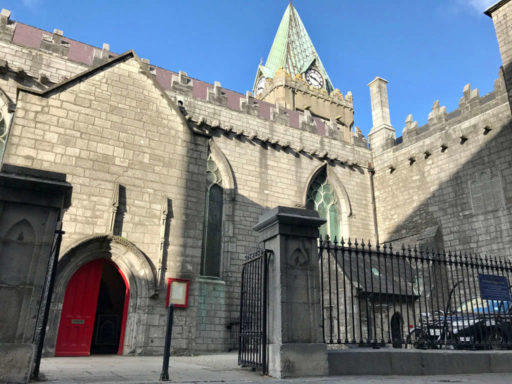
Dating back to 1320, this church has witnessed transformations from Catholic to Protestant before becoming the Church of Ireland. Legend has it that Christopher Columbus worshipped within its walls during his visit in 1477.
The Claddagh
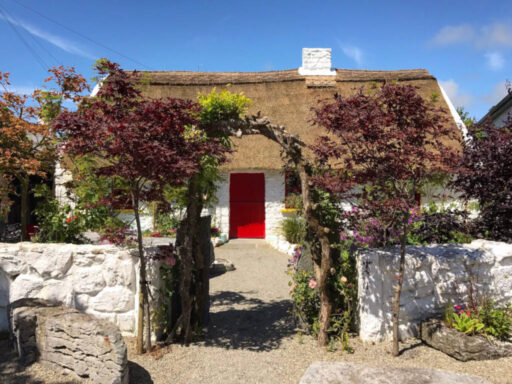
Once a bustling fishing settlement in the 5th century, Claddagh birthed the iconic Claddagh ring. Symbolizing love, friendship, and devotion, the ring’s design emerged from the experiences of Richard Joyce, a former pirate captive turned skilled craftsman.
Galway City Museum
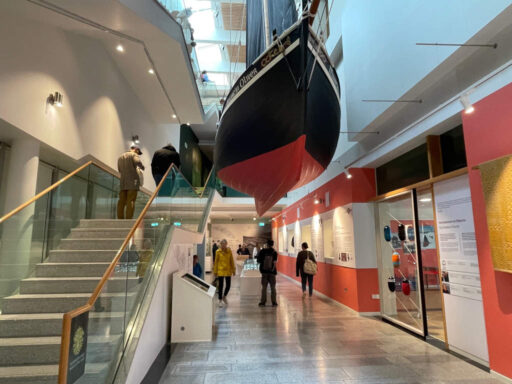
For a comprehensive journey through Galway’s history, the museum on Spanish Parade spans three floors, housing exhibitions on art, maritime science, archaeology, and heritage.
Early Times
One of the earliest monuments is the Turoe Stone, near Loughrea. It is a granite stone featuring “La Tene” celtic art, and dates from c.200 B.C. This curvilinear art acts as a reminder of Ireland’s Celtic past when the La Tene Celts came from Switzerland to Ireland and brought with them language, writing, folklore and music.
Ireland was celebrated as the Land of Saints and Scholars from the 5th to the 10th century, and Galway was no exception. Some of the Christian Saints in Galway included Saint Enda in Inishmore, St Columcille, St Feichin in Cong, St. Rock in Little Killary, and Saint Sourney in Inishmore.
City Origins
Galway, “The City of the Tribes”, was originally founded as a fishing village in the area close to the Spanish Arch, where the Corrib River flows into beautiful Galway Bay. The Normans came to Ireland in 1169 and began to occupy Connacht in the early 12th century.
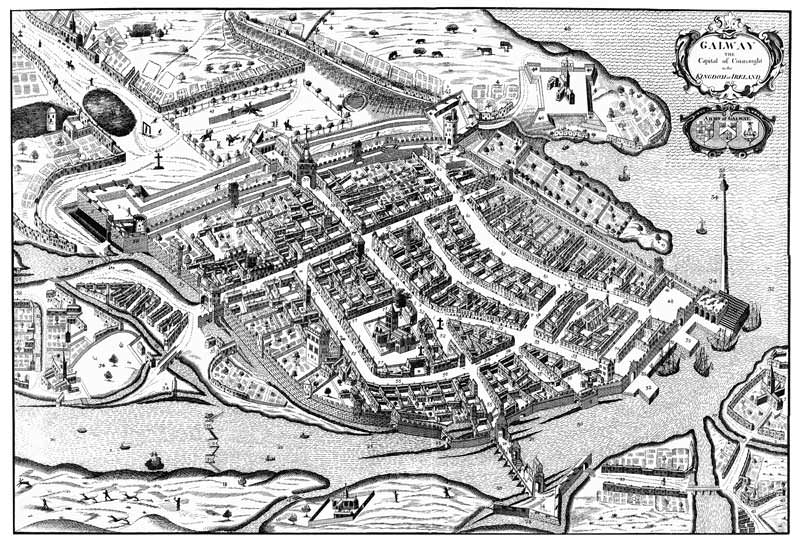
By the year 1232 it was held by the Anglo Normans under Richard de Burgo, but constant flying raids by the various Clans in the region brought about the need to build defensive walls. The work was commenced and it was an immense task given the small population of the town and the tools of the period. By 1270 much of the walls were in place including the Spanish Arch itself, and the town began to grow and prosper. A charter was granted in 1396 by Richard II which transferred governing powers to 14 merchant families, known locally as the 14 tribes of Galway. Each of the 14 tribes maintained a quasi-independence, while still retaining respectful links to the British crown. Galway City is now known and “City of The Tribes”, and the names of these fourteen tribes are now represented on roundabouts in Galway City.
Click here to discover the Best Castles to Explore in Galway.
Turbulent Times
However, elsewhere in the county, battles raged. The Battle of Aughrim was fought on the 12th of July, 1691 and was the last great land battle in Ireland. It involved the Williamite and Jacobite armies, and the result of the battle changed the course of Irish history. The Williamites were victorious, but the human casualties were high. It is estimated that 9,000 soldiers lost their lives on that fateful day, making it one of the bloodiest battles in Ireland’s history.
Landed Estates
The 18th century in Galway was more peaceful, with upper class, landowning Protestants starting to build Big Houses and Demenses in the county instead of defensive castles. Traces of this can be found throughout County Galway – Aughnanure Castle is a fine example of a 15th century tower house, while Portumna Castle is a wonderful example of a 17th century fortified house built by local landowners, the Clanricarde Burkes. However these were times of great inequality where Galway, like many other counties in Connacht, was ravaged by the Great Famine of 1845 which saw thousands die, and thousands more emigrate.
Trade Links
Galway’s strategic coastal location and natural harbour caused successful trading links to be built up with both Portugal and Spain, and the city prospered for many centuries. Cromwell, however, arrived in 1651 and the region entered a long period of decline. Other prominent sea ports emerged on the east coast, namely Dublin and Waterford, and trade with Spain came to an end. Many years would pass before Galway would again enjoy such prosperity, but the legacy of the city’s long and colourful history is still evident in the character and style of the city’s building stock.
Notable figures of historical importance connected to Galway
Michael D. Higgins
The current President of Ireland, secured his second seven-year term in 2018, marking him as the ninth president since 2011. Born in Limerick in 1941, Higgins enriched his education at the University College of Galway, where he later lectured. Prior to his presidential tenure, he served two terms as the mayor of Galway.
Alice Perry
A Galway native born in 1885, etched her name in history by becoming the first female engineer in the United Kingdom or Ireland in 1904. A trailblazer, Perry shattered gender norms and paved the way for future generations.
Richard Joyce
The craftsman behind the iconic Claddagh Ring, originated the design in 1700 in the seaside hamlet of Claddagh, Co. Galway. Joyce’s life took an adventurous turn, as he was kidnapped by pirates, endured slavery, and later became a skilled goldsmith. The Claddagh Ring, symbolizing love, loyalty, and friendship, remains a globally recognized emblem.
Grace O’Malley
Known as Ireland’s Pirate Queen, embarked on sea adventures from a young age. Born in County Mayo, adjacent to Galway, in 1530, O’Malley negotiated with Queen Elizabeth I for the release of her imprisoned family members, demonstrating her strategic prowess. Throughout her life, she undertook numerous journeys from Galway, leaving a lasting legacy as a formidable and fearless maritime figure.
Historical representation of Old Galway
3D model of Medieval Galway based on the Pictorial Map of Galway (circa 1651). Interactive version on display in Galway City Museum.
